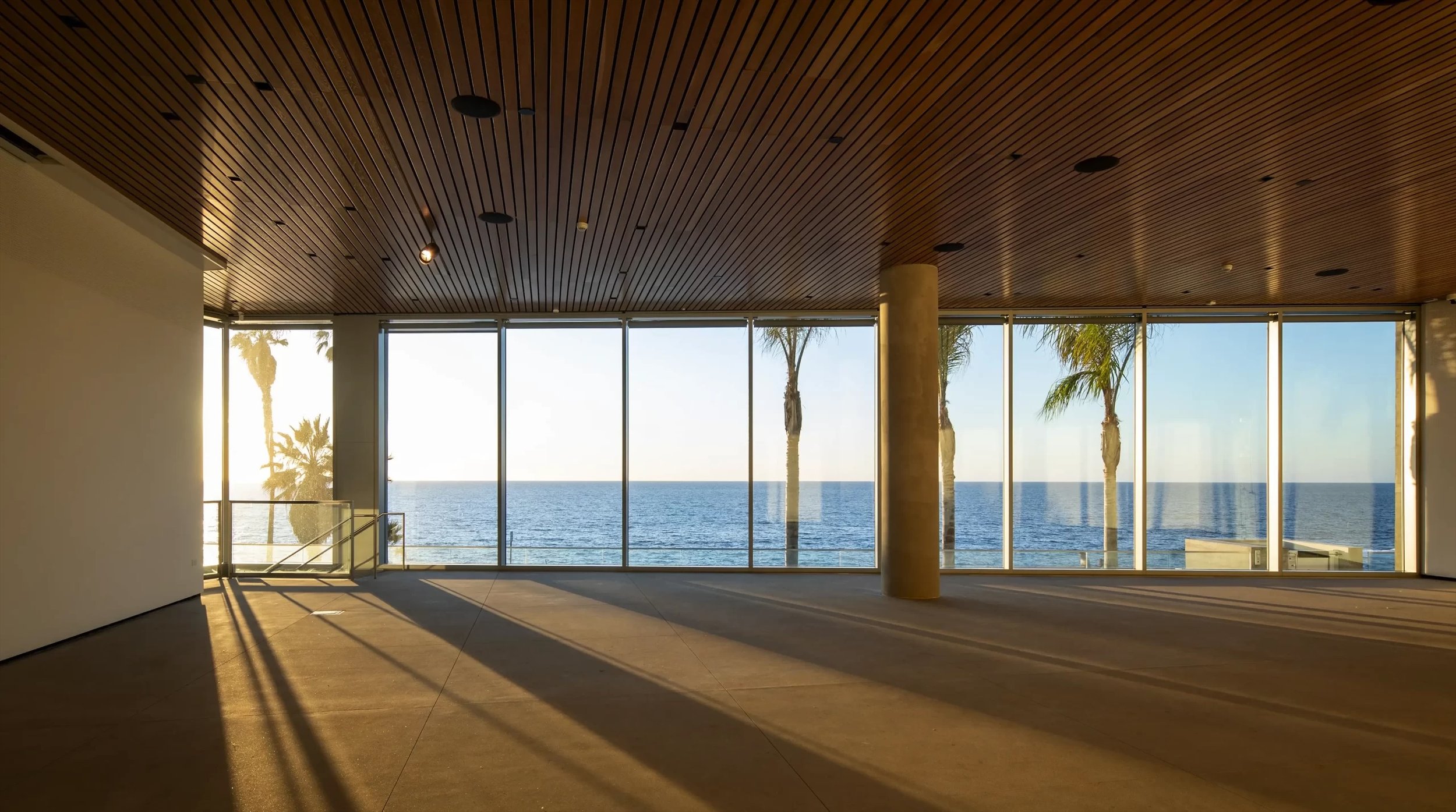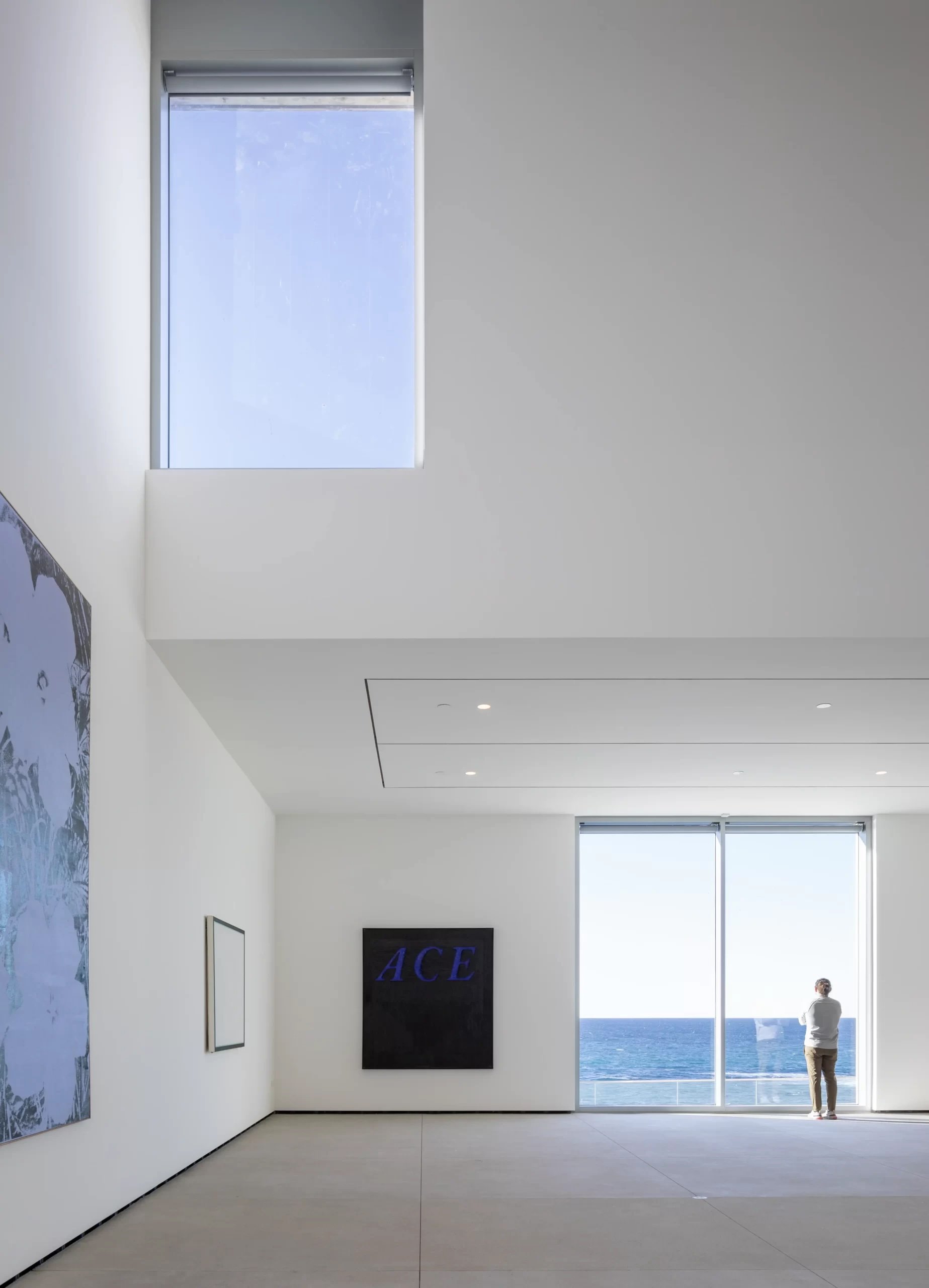Life in La Jolla: Three 20th-Century Modern Architectural Masterpieces
MCASD La Jolla, Coastal view, Nicholas Venezia courtesy of Selldorf Architects
Los Angeles, CA is experiencing a tragic series of wildfires that have not only destroyed acres of housing and other architectural structures, but have deeply impacted and harmed its local inhabitants and wildlife. California houses multiple biospheres as well as the San Andreas fault, leaving the state prone to natural disasters such as wildfires, earthquakes, and tsunamis.
Its unique climate, geography, and biodiversity lie at the core of California’s architecture, which is built to withstand these factors. Roughly 200 kilometers south of LA, various 20th-century architectural structures line La Jolla’s rugged coastline. Although they are not located in a fire risk zone, these structures must withstand earthquakes, tidal waves and erosion, and could be affected by tsunamis. The LA fires have significantly uprooted the lives of many individuals in the community, underscoring the relationship between California’s anthroposphere and its natural conditions.
La Jolla, or “The Jewel” in Spanish, is a small coastal town in San Diego comprising rugged coastlines, surf lineups, and year-long warm weather. As a native, our culture of laid-back, indoor-outdoor living centers around the Pacific Ocean, as does our artistic climate. Southern California is renowned for its 20th-century modern architecture which integrates coastal living into its geometrical concrete structures that provide panoramic ocean views.
The recently expanded Museum of Contemporary Art San Diego in La Jolla takes the relationship between our beloved ocean and fine art a step further. The rectilinear floor plan unfolds above the beach, with vibrant colors pouring into the stark white galleries through the windows and glass walls. These windows are juxtaposed with large modern artworks, framing the external landscape as its own artwork to be viewed in conjunction with Warhols, Ruschas, and Kellys. Three galleries reference the Light and Space movement, a group of southern Californian artists who explore light as an artistic medium. Robert Irwin’s “1º 2 º 3 º 4º” (1997) consists of three square-shaped apertures in windows that capture snapshots of the ocean. Irwin blurs the lines between fine art, architecture, and nature as he creates a work highly dependent on its geographic location. The viewer is fully immersed—he or she can see, feel, and smell the ocean breeze. In combination with Nancy Rubins’ “Pleasure Point” (2006), a commissioned sculpture of rowboats, canoes, and surfboards cascading from the museum’s roof, the two works reference the local lifestyle.
Robert Irwin, 1o 2 o 3 o 4o, 1997, Apertures cut into existing windows, Apertures: 61 x 76.2 cm (left), 61 x 66 cm (centre), 61 x 76.2 cm (right), overall room dimensions: 292.1 x 812.8 x 561.3 cm, MCASD La Jolla
MCASD La Jolla, Golden hour, Nicholas Venezia courtesy of Selldorf Architects
MCASD La Jolla, Interior gallery view, Nicholas Venezia courtesy of Selldorf Architects
Less than 5 miles away, UC San Diego’s world-renowned Salk Institute of Biology towers over Black’s Beach. A long concrete river feature takes front and center, with rectilinear hive-like buildings lining the left and right flanks, made of concrete with teak panels. The river leads to a small pool below, creating an infinity effect that seemingly connects the architectural complex to the Pacific Ocean. Jonas Salk, developer of the first polio vaccine, instructed Louis Kahn to “create a facility worthy of a visit by Picasso.” The complex’s geometric architecture certainly plays with perspective as diagonal concrete partition walls jut out towards the travertine courtyard, altering the appearance of the building as the viewer moves around the complex. The water features tie the structure into the surrounding landscape, and its monumentality reflects the leading research brewing inside its laboratories.
The Salk Institute for Biological Studies, central courtyard, Wikimedia
The Mushroom House, Oceanside facade, Wikimedia
Just a short walk down the beach from the Salk Institute, an unusual and abandoned circular home sits directly on the sand. A thick concrete cylinder acts as a pedestal for the disk-shaped structure known as the Mushroom House, with ocean-facing glass and wood panels providing 180-degree views. It originally functioned as a guest house in the 20th century, built by Dale Naegle in 1968 for Sam Bell of Bell’s Potato Chips. An out-of-order tram climbs the 300-foot eroded cliff up to the main home, which was demolished in 1990.
These three structures define La Jolla’s artworld and local culture, both intertwined with the natural landscape they inhabit. With the MCASD’s cut-out windows inviting airflow and the Mushroom House protecting against tidal waves and erosion, the modern 20th-century buildings reflect the year-round ocean-centric lifestyle in the 92037-zip code.





